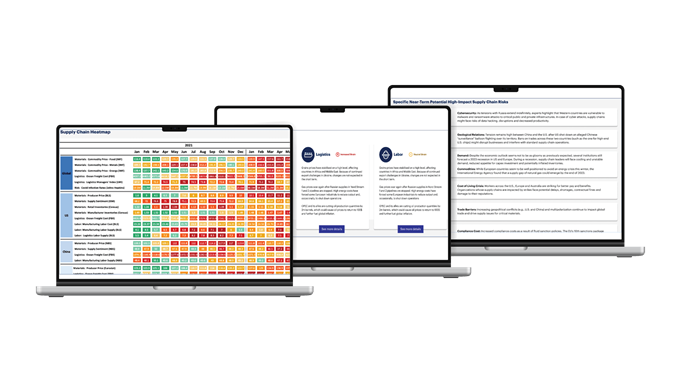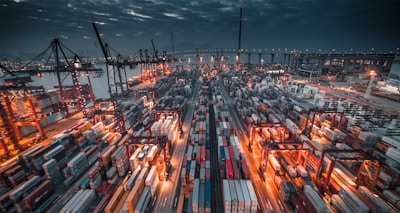Are you feeling the impact of delays and shortages in your business? Global supply-chain disruptions are more common than ever, affecting everything from raw materials to finished products.
These disruptions can lead to increased costs, lost sales, and frustrated customers. But what if you could stay ahead of these challenges? You’ll discover how to navigate the complexities of supply-chain disruptions. You’ll learn to identify warning signs, utilize effective strategies, and implement alert systems that keep you informed.
With the right knowledge, you can minimize risks and protect your bottom line. Don’t let supply-chain issues catch you off guard. Read on to empower your business with the insights you need to thrive in a turbulent market.

Causes Of Supply-chain Disruptions
Many factors cause supply-chain disruptions. The pandemic has greatly affected logistics. It made moving goods harder. Many ports closed or slowed down.
Geopolitical tensions and trade wars also create problems. Countries may stop trading with each other. This can lead to shortages of important items.
Natural disasters and climate challenges impact supply chains too. Floods, hurricanes, and wildfires can destroy key infrastructure. This makes transport very difficult.
Technological vulnerabilities in systems are another issue. Cyberattacks can shut down operations. Companies must secure their technology to prevent this.

Key Industries Affected
Many industries face serious problems due to supply chain issues. The automotive sector struggles with semiconductor shortages. This slows down car production. Consumers wait longer for their vehicles.
Retail and consumer goods also suffer. Delivery delays cause empty shelves in stores. Shoppers find fewer choices. This affects sales and customer satisfaction.
The healthcare sector deals with supply gaps in medicines and equipment. Hospitals may not have what they need. This can harm patient care and safety.
Food and agriculture face distribution challenges too. Farmers cannot get their products to stores. This leads to food shortages and higher prices for consumers.
Signs Of Disruption In Supply Chains
Increased freight costs are a clear sign of trouble. Prices rise due to fewer ships and trucks. This leads to higher costs for everyone.
Extended delivery timelines affect many businesses. Goods take longer to arrive. Customers often wait more days than before.
Inventory shortages happen in key markets. Stores run low on popular items. This frustrates customers who want to buy.
Shifts in consumer purchasing behavior are noticeable. People buy more online than in stores. This change puts more pressure on supply chains.
Strategies For Navigating The Chaos
Diversifying the supplier base helps reduce risks. Using multiple suppliers can keep goods coming. This way, if one supplier fails, others can fill the gap.
Investing in supply chain technology is very important. It can help track shipments easily. Better technology means fewer delays and mistakes.
Building resilient and agile systems helps businesses respond quickly. These systems can adapt to changes. They can handle unexpected problems better.
Collaborating across global networks makes supply chains stronger. Working together with other businesses can share resources. This can lead to better solutions for everyone involved.
Role Of Technology In Mitigating Risks
AIhelps businesses predict what customers want. It looks at past data. This way, companies can prepare better for demand.
Blockchainensures clear records of every transaction. This makes the supply chain more open. Everyone can see where goods come from.
IoTdevices provide real-time updates. They track products during transport. This helps companies act quickly if something goes wrong.
Automationspeeds up many tasks. Machines can do jobs that take time. This improves overall efficiency in the supply chain.
The Future Of Global Supply Chains
Global supply chainsare changing. Many companies focus on regionalization. This means sourcing materials closer to home. It reduces long shipping times and costs.
Sustainabilityis becoming very important. Businesses want to be more eco-friendly. They aim to reduce waste and energy use.
Preparing for future disruptionsis key. Companies must plan for unexpected events. This includes natural disasters and political changes.
Risk management cultureis essential. It helps businesses handle risks better. Employees must understand their roles in this process.

Frequently Asked Questions
What Causes Global Supply-chain Disruptions?
Global supply-chain disruptions can be caused by various factors. These include natural disasters, geopolitical tensions, and pandemics. Additionally, labor shortages, transportation delays, and trade restrictions can further exacerbate these disruptions. Understanding these causes is essential for businesses to mitigate risks effectively.
How Do Supply-chain Disruptions Impact Businesses?
Supply-chain disruptions can significantly impact businesses by causing delays and increasing costs. Companies may face inventory shortages, which lead to lost sales. Additionally, disruptions can damage customer relationships and brand reputation. Businesses must adapt quickly to navigate these challenges and maintain operational efficiency.
What Are The Signs Of Supply-chain Issues?
Signs of supply-chain issues include delayed shipments and increased lead times. Additionally, rising costs of materials and inconsistent product availability are key indicators. Businesses may also notice sudden changes in customer demand and supplier communication problems. Recognizing these signs early can help in proactive management.
How Can Companies Prepare For Supply-chain Disruptions?
Companies can prepare by diversifying suppliers and improving inventory management. Implementing robust risk assessment frameworks is also crucial. Regularly reviewing and updating supply-chain strategies ensures resilience. Furthermore, investing in technology can enhance visibility and responsiveness to potential disruptions.
Conclusion
Global supply-chain disruptions affect everyone. They create challenges for businesses and consumers alike. Staying informed is key. Companies must adapt to changes quickly. Better planning helps to reduce risks. Communication with suppliers remains crucial. Monitoring trends aids in decision-making. Remember, flexibility is vital in this fast-paced world.
Embrace new strategies to navigate disruptions. Together, we can face these challenges head-on. Understanding the situation leads to better solutions for all. Stay alert and proactive to manage supply-chain issues effectively.
Read More:
- Smart Grid Pilot Program Launches: Revolutionizing Energy Use
- Next‑Gen Renewable Energy Storage Updates: Breaking Innovations
- Us Midterm Election Impact Analysis: Key Takeaways & Trends
- New Data‑Privacy Law Enforcement Cases: Unveiling Insights
- Mental‑Health Teletherapy Adoption Rates: A Rising Trend
- Ethereum Shanghai Upgrade Analysis: Unveiling Key Insights
- German Election Polling Analysis: Insights and Key Trends
- Bitcoin ETF Approval Timeline: Navigating the Future

